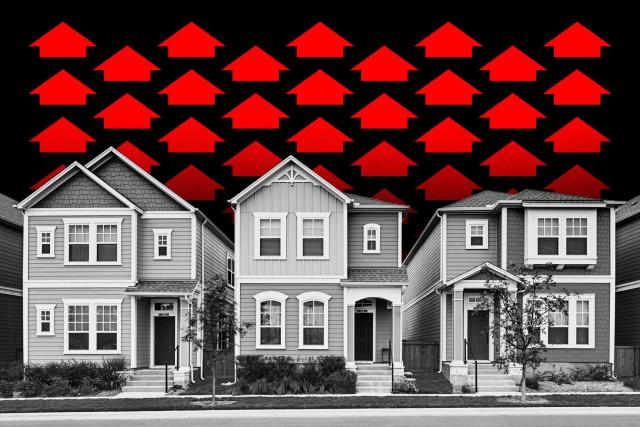Just as the U.S. housing market seemed to be improving with a modest drop in mortgage rates, Zillow revised its 2024 home price outlook on Thursday. Initially forecasting flat prices for the year, Zillow now predicts a 3.7% increase, attributing the adjustment to “external factors,” including a decline in mortgage rates and an improved inflation outlook by the Federal Reserve. This change is not driven by significant shifts in housing dynamics or buyer behavior, such as a sudden surge in inventory or a shift from a sellers’ to a buyers’ market.
The recent decrease in mortgage rates means that monthly payments for a typical home are now $1,790, which is $413 lower than October 2023, according to Zillow senior economist Nicole Bachaud. This reduction potentially expands the pool of homebuyers, fostering increased competition in the market. An optimistic inflation outlook could lead to mortgage rates remaining lower in the spring, attracting both buyers and sellers, thereby exerting upward pressure on home prices.
Redfin also reported a substantial 5.1% increase in home prices during the four weeks ending January 21, the largest surge since October 2022. However, Redfin anticipates a 1% decline in home prices year-over-year in the second and third quarters of 2024, marking the first decrease since 2012, according to chief economist Daryl Fairweather. Yet, Fairweather acknowledges the uncertainty in these predictions, highlighting the possibility of both price declines and increases.
Despite Zillow’s forecast for a 3.7% increase in home prices, Bachaud reassures buyers that this level of appreciation is within historical norms, ranging between 3% and 5%. She emphasizes that the housing market is not expected to witness the rapid price growth seen during the pandemic.
While Zillow’s revision primarily stems from mortgage rate declines and an improved inflation outlook, other factors could influence home prices. Bachaud notes that housing inventory has played a crucial role in recent price movements, with limited supply and sustained demand driving prices higher. However, 2024 has seen an increase in inventory, including existing homes entering the market as homeowners feel “unlocked” from previous high mortgage rates. The ongoing “building boom” in 2021 and 2022 is also contributing to higher inventory.
Bachaud believes this increased inventory will help balance market demand and prevent rapid price acceleration. Despite historically low January inventory levels, Redfin predicts a rise in new listings as the mortgage rate lock-in effect eases. Ultimately, mortgage rates remain a key factor in driving home prices, with potential fluctuations depending on the trajectory of inflation and global conflicts.



